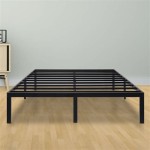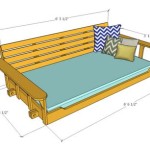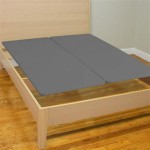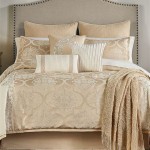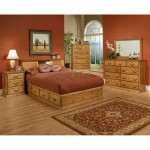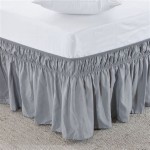Bed Head Vs. No Bed Head: A Comprehensive Guide to Morning Hair
The state of one's hair upon waking can range from effortlessly chic to a chaotic tangle. This article explores the spectrum of morning hair, comparing the often-maligned "bed head" look with its more polished counterpart: styled or "no bed head" hair. Understanding the factors contributing to each look can empower individuals to achieve their desired morning hair aesthetic.
Factors Contributing to Bed Head
Several elements contribute to the development of bed head. These include:
- Friction between hair and pillowcase
- Natural hair texture and length
- Sleep position
- Products used before bed
- Individual hair growth cycles
- Humidity levels in the sleeping environment
Friction plays a significant role, as the movement of hair against the pillowcase throughout the night can disrupt the hair's cuticle, leading to tangles and frizz. Similarly, natural hair texture and length influence how susceptible hair is to becoming disheveled. Individuals with longer or curlier hair often experience more pronounced bed head.
The Science of "No Bed Head"
Achieving a polished, non-bed head look typically involves some form of styling or preventative measures. The science behind these methods often centers on manipulating the hair's structure and managing external factors:
- Smoothing the hair cuticle
- Controlling moisture levels
- Protecting hair from friction
Many hair products, such as serums and leave-in conditioners, work by smoothing the hair cuticle. This reduces friction and creates a smoother, more manageable appearance. Likewise, techniques like braiding or wrapping hair before bed minimize movement and friction, preventing the development of bed head.
Embracing the Bed Head Look
While often perceived as undesirable, bed head has become a popular hairstyle in its own right. This textured, undone look can be achieved intentionally through various styling products and techniques. Key elements of the intentional bed head look include:
- Texturizing sprays or powders
- Strategic tousling and arranging
- Enhancing natural waves and curls
Products like texturizing sprays or dry shampoo can add volume and create a deliberately disheveled appearance. These products often contain ingredients that absorb excess oil and create a matte finish, enhancing the textured look. Additionally, strategically tousling and arranging the hair can further contribute to the desired bed head aesthetic.
Managing and Preventing Bed Head
For those who prefer a smoother, more controlled morning hair look, several strategies can help manage and prevent bed head. These techniques focus on minimizing friction and maintaining hair’s structure:
- Using silk or satin pillowcases
- Braiding or loosely tying hair before bed
- Applying leave-in conditioners or hair oils
- Sleeping with a hair wrap or bonnet
Silk or satin pillowcases, unlike cotton, create less friction against the hair, minimizing tangles and frizz. Braiding or loosely tying the hair can further reduce movement during sleep. Moreover, applying leave-in conditioners or hair oils can help hydrate and smooth the hair cuticle, making it less prone to becoming disheveled.
Styling "No Bed Head" Hair
Achieving a polished, no bed head look often involves styling in the morning. This can range from simple brushing and combing to more elaborate techniques involving heat styling tools. Common styling methods include:
- Brushing and combing
- Blow-drying
- Straightening or curling
- Using styling products like gels or mousses
Brushing and combing help to detangle and smooth the hair, while blow-drying can add volume and shape. Heat styling tools like straighteners and curling irons allow for more precise styling. Additionally, styling products like gels, mousses, and hairsprays can provide hold and control, helping to maintain the desired hairstyle throughout the day.
Choosing the Right Approach for Your Hair Type
The most effective approach to managing morning hair depends on individual hair type and desired style. Factors to consider include:
- Hair texture (straight, wavy, curly, coily)
- Hair thickness
- Scalp type (oily, dry, sensitive)
- Desired hairstyle
Individuals with thicker, curlier hair may find that embracing their natural texture and styling their bed head is a more manageable approach than attempting to achieve a perfectly smooth, straight look. Conversely, those with finer hair may find it easier to prevent bed head altogether through preventative measures and minimal styling. Understanding one’s hair type and preferences is key to developing a successful morning hair routine.
Ultimately, the choice between embracing bed head or opting for a more styled look is a personal one. Both approaches have their own unique aesthetic appeal and can be achieved through various techniques and products. By understanding the factors influencing morning hair, individuals can develop a routine that best suits their hair type, lifestyle, and desired style.

Headboard Vs No B2c Furniture

Headboard Vs No B2c Furniture

Headboard Vs No B2c Furniture

10 Stylish Bed With No Headboard Ideas Organised Pretty Home

13 Practical No Headboard Ideas For Your Bedroom Life S Ahmazing

Do You Really Need A Bedhead Here Are 4 Reasons Why Should Have O Bed Threads

How Bed Head Prevents You From Retaining Length

5 Ways To Decorate Above Your Bed Without A Headboard Minimalist Frame Furniture Design

5 Reasons To Get A Bedhead Abide Interiors

Tigi Bed Head Queen Beach Salt Infused Texture Spray Review

